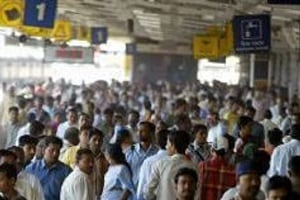Since new districts are created all the time, by sub-dividing existing districts, the number of districts keeps changing. It is 686 now. It used to be 640 in the 2011 census and 593 in the 2001 census. Districts vary widely, in population, as well as area. Thane in Maharashtra may have (in 2011) a population of 11.1 million, Dibang Valley in Arunachal Pradesh has a population of 8,004. Incidentally, area-wise, Dibang Valley is the largest district in Arunachal. Kachchh in Gujarat may have a geographical area of 45,650 sq km, Mahe in Puducherry has an area of less than 9 sq km. In understanding districts and their socio-economic profiles, I have always wondered why much more use is not made of district gazetteers. They are a treasure-trove of information. “Their great importance is clear from the fact that the prime minister of India in his speech in the Lok Sabha (April 28, 1965) quoted from different Gazetteers to corroborate the fact that the Rann of Kutch formed a part of India. So the Gazetteers, whether it is District Gazetteers, or State Gazetteers or Indian Gazetteers, are indeed of a national asset. The documentation centre of some foreign countries have spent a large sum of money on microfilming the entire series—old and new—of Gazetteers.”
The “old” means gazetteers published during the colonial period, beginning in 1870s and supplementary volumes added till 1930s. The “new” means post-Independence gazetteers. Some states (such as Maharashtra and Tamil Nadu) started publishing newer versions of these gazetteers, even after Independence. This was important enough for preparation of gazetteers to become a national project in 1957. Therefore, all states should have published gazetteers and should have gazetteer departments. The former is probably true. The latter is not invariably true, since there may be gazetteer units under some other department. All districts have websites. Anyone who has visited these websites knows quality of information given varies widely from district to district, even within the same state. I don’t understand why states don’t prescribe a template, indicating minimum information a district’s website must contain. Thus, from these websites, you will not necessarily know whether that particular district has ever had a district gazetteer. When the states have gazetteer departments and they have an internet presence, you will get a complete list of gazetteers published and sometimes, even the texts. Searching the internet, my listing of best states includes Haryana, Karnataka, Maharashtra, Punjab and UP. By “best”, I mean district gazetteers being available on the internet. Other states have no doubt published “new” gazetteers, but they are probably more concerned with selling the “old” and the “new”, not offering them free. The quote I gave you is from the UP site. Of those five states, I think the sites are best organised for Maharashtra, Karnataka and UP.
Article 243ZD of the Constitution mandates district planning. “There shall be constituted in every State at the district level a District Planning Committee to consolidate the plans prepared by the Panchayats and the Municipalities in the district and to prepare a draft development plan for the district as a whole.” It is true success of district planning has varied from state to state, despite existence of guidelines and a manual on integrated district planning since 2006-08. I think district gazetteers provide useful inputs about the base on which a district wishes to build and plan for the future. Development is a dynamic process and I am not suggesting it is static. But district gazetteers give us some sense of the foundation and legacy. There is a lot of focus on states. Since there are significant inter-district variations within the same state, which state-level Human Development Reports also bring out, there should be even greater focus on districts, with emphasis not just on Union-state fiscal devolution, but also intra-state fiscal devolution.
Whatever be the indicator used, between 70 and 100 districts will be “backward”. That’s where deprivation is centred and development marginalised and that list of 70-100 has been more or less unchanged since 1947. They have no doubt advanced in absolute terms. But in relative terms, they still remain “backward”. At one level, if the criterion is relative, that some will be “backward” is tautological. It isn’t as if this problem hasn’t been recognised. The 1960 Committee on Dispersal of Industries identified 100 backward districts. Thirty six years later, in 1996, the EAS Sarma Committee also identified 100 backward districts. The reason the issue isn’t purely tautological is because there is almost perfect correspondence between the backward list of 1960 and the one of 1996. One would have understood had there been some churn in the rankings. These districts are the ones in Rashtriya Sam Vikas Yojana’s backward districts initiative, with a concentration (more than 5 districts) in undivided Andhra Pradesh, Jharkhand, Madhya Pradesh, Maharashtra, Tamil Nadu, UP, West Bengal and Assam. Track inadequate progress towards MDGs, or identify problem districts from the perspective of SDGs. Those districts will figure again. At some level of generalisation, you will notice three points about these “backward” districts. First, they tend to be bypassed by national highways. Second, they tend to be bypassed by railway networks. Third, any inter-linking of rivers will benefit these considerably. Hence, my question about “old” gazetteers. Were these districts always “backward”, or did colonial transport (and land) policy accentuate backwardness? Transport connectivity is usually a prerequisite for development.
The author is member, NITI Aayog. Views are personal

